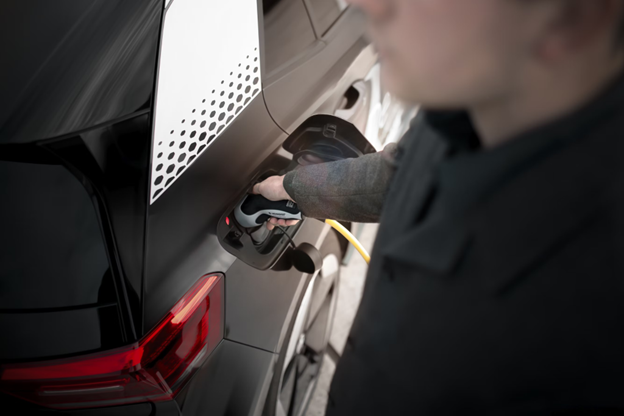 Have you ever wondered how electric vehicles (EVs) stay powered up and ready to hit the road? As more drivers make the switch to electric, understanding the ins and outs of EV charging becomes crucial. Whether you’re a curious car enthusiast or considering EV fleet solutions for your business, let’s explore the world of electric vehicle charging.
Have you ever wondered how electric vehicles (EVs) stay powered up and ready to hit the road? As more drivers make the switch to electric, understanding the ins and outs of EV charging becomes crucial. Whether you’re a curious car enthusiast or considering EV fleet solutions for your business, let’s explore the world of electric vehicle charging.
The ABCs of EV Charging
First things first: not all EV chargers are created equal. There are three main types of charging stations you’ll encounter:
- Level 1 Chargers: These chargers use a standard 120-volt household outlet. As they
take 8-20 hours to provide a full charge, they are best to use for overnight charging at home.
- Level 2 Chargers: They require a 240-volt outlet (like your dryer uses). They charge 3-7 times faster than Level 1 and are common in homes, workplaces, and public spaces.
- DC Fast Chargers: This type of charger delivers high-powered DC current directly to the battery. They’re the fastest options around, capable of charging up to 80% in 20-30 minutes. Due to that, they are ideal for long trips and quick top-ups.
Where Can You Charge?
Charging your EV isn’t just about plugging in at home. Here are some common charging locations:
- At Home: Most EV owners charge overnight in their garage or driveway.
- In the Workplace: Many companies offer charging stations for employees.
- On the Go: Public charging stations are popping up in parking lots, shopping centers, and along highways.
- Destination Stations: Hotels, restaurants, and tourist attractions are joining the charging game.
How Long Does It Take to Charge an EV?
EV charging time depends on several factors. Battery size, charger type, and current charge level all play a role. Here’s a rough guide:
- Level 1: 2-5 miles of range per hour of charging
- Level 2: 10-60 miles of range per hour
- DC Fast Charging: Up to 200 miles of range in 30 minutes
Charging Etiquette 101
As EV adoption grows, so does the need for charging etiquette. Here are some golden rules:
- Don’t hog the charger: Move your car once it’s fully charged
- Be mindful of time limits: Some stations have restrictions
- Avoid “ICEing”: Don’t park a gas-powered car in an EV charging spot
- Leave it tidy: Coil up the charging cable when you’re done
The Future of Charging
Exciting developments are on the horizon for EV charging. Wireless charging pads, ultra-fast chargers, and even solar-powered stations are in the works. As technology advances, charging your EV will become even more convenient and efficient.
Tips for Smooth Charging
Want to make your EV charging experience a breeze? Try these tips:
- Plan ahead: Use apps to find charging stations on your route
- Join charging networks: Sign up for memberships to streamline payment
- Optimize your battery: Avoid frequent deep discharges and extreme temperatures
- Know your car: Understand your EV’s specific charging needs and capabilities
The Bottom Line
Electric vehicle charging might seem complicated at first, but it’s really not rocket science. With a bit of knowledge and planning, keeping your EV powered up can be a breeze. As more drivers embrace electric vehicles and businesses explore EV fleet solutions, the charging infrastructure will only continue to improve.
So, are you ready to plug in and join the electric revolution? Whether you’re a seasoned EV driver or just starting to consider making the switch, understanding the basics of EV charging is your ticket to a smoother, cleaner ride. Who knows? You might find that the convenience and eco-friendly benefits of electric vehicles are just the jolt your driving experience needs.










